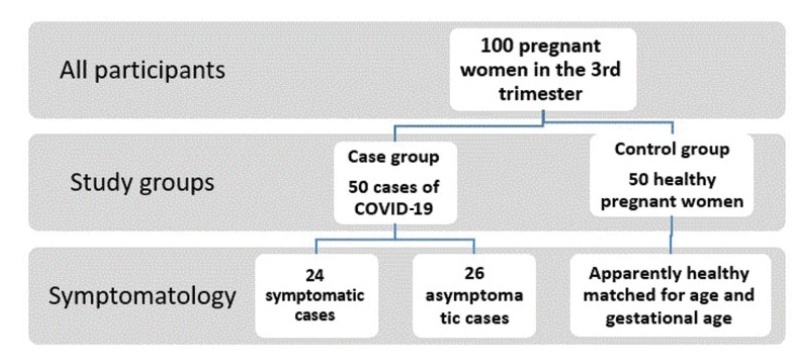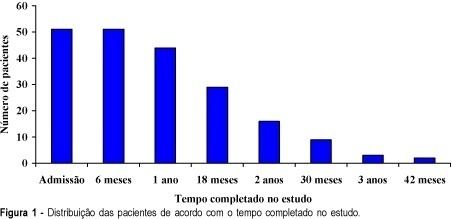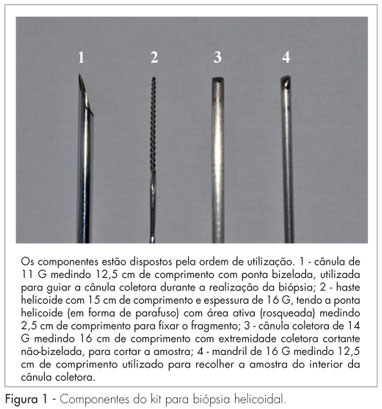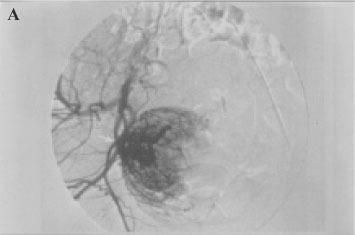Summary
Revista Brasileira de Ginecologia e Obstetrícia. 2004;26(8):595-602
DOI 10.1590/S0100-72032004000800002
PURPOSE: to evaluate the effects of estradiol benzoate associated with dexamethasone on the squamocolumnar junction (SCJ) of rats in permanent estrus (PE) and then ovariectomized (Ovx). METHODS: thirty female rats were divided into six groups of five animals each: PhEG rats in physiological estrus (PhE) treated with propylene glycol (vehicle); OVXG rats in PhE, Ovx and treated with vehicle; PEG - rats in PE treated with vehicle; PEOVXG rats in PE, Ovx and treated with vehicle; ESTRG rats in PE, Ovx and treated with 10 mg per day benzoate of estradiol, and DEXAG in PE, Ovx and treated with 10 mg per day estradiol benzoate associated with 0.8 mg dexamethasone. PE induction was performed with 1.25 mg testosterone propionate per animal per day after birth. After 90 days, rats in the OVXG, EPOVXG, ESTRG, and DEXAG groups were ovariectomized. After 21 days of castration, all animals received the corresponding treatment for five days. At the end of the experiment, all animals were sacrificed and the uteri removed for histological routine. RESULTS: the borders of the SCJ in the PEG were irregular and not clearly delineated, with many buds towards the direction of the lamina propria as well as a reduction in the leukocyte number compared to the PhEG. The SCJ of the OVXG and PEOVXG was not very visible, with cubical epithelium on the endometrial side and with reduction in the layers of squamous epithelium due to stromal atrophy. The SCJ in the ESTRG was more developed than in the OVXG and PEOVXG, but it was similar to that of the PEG, having unclear borders. In contrast, the SCJ of the DEXAG was well-delineated and similar to the PhEG. CONCLUSION: our data suggest that estrogen associated with dexamethasone may be important for remodeling SCJ morphology in female rats with previously induced permanent estrus and subsequent ovariectomy.

Summary
Revista Brasileira de Ginecologia e Obstetrícia. 2004;26(8):595-595
Summary
Revista Brasileira de Ginecologia e Obstetrícia. 2021;43(8):595-599
To describe the hematological changes, the platelet indices in particular, in pregnant women with coronavirus disease 2019 (COVID-19) compared to healthy pregnant women.
A retrospective case-control study conducted at the Al Yarmouk Teaching Hospital, in Baghdad, Iraq, involving 100 pregnant women, 50 with positive viral DNA for COVID-19 (case group), and 50 with negative results (control group); both groups were subjected to a thorough hematological evaluation.
Among the main hematological variables analyzed, the platelet indices, namely the mean platelet volume (MPV) and the platelet distribution width (PDW), showed statistically significant differences (MPV: 10.87±66.92 fL for the case group versus 9.84±1.2 fL for the control group; PDW: 14.82±3.18 fL for the case group versus 13.3±2.16 fL for the controls). The criterionvalue of the receiver operating characteristic (ROC) curve forPDWat a cutoffpoint of>11.8 fL showed a weak diagnostic marker, while the MPV at a cutoff value of>10.17 fL showed a good diagnostic marker.
The MPV and PDW are significantly affected by the this viral infection, even in asymptomatic confirmed cases, and we recommend that both parameters be included in the diagnostic panel of this infection.

Summary
Revista Brasileira de Ginecologia e Obstetrícia. 2006;28(10):596-600
DOI 10.1590/S0100-72032006001000005
PURPOSE: To analyze gestation evolution and deliveries after myoma treatment by embolization of the uterine arteries. METHODS: In the initial evaluation, 112 patients submitted to embolization of uterine arteries were included for treatment of myoma. From those, only nine wanted to be submitted to conservative treatment in order to keep their reproductive capacity. This procedure was indicated to the nine patients, since they were not susceptible to a conservative surgical treatment. They were submitted to embolization of the uterine arteries with particles of polyvinyl alcohol or embospheres with diameters ranging from 500 to 700 µm, and they have evolved without intercurrence. RESULTS: During the follow-up of these patients, there was a good clinical response with significant reduction in the uterus and myoma volumes. Four of them got pregnant, two had an early abortion and two evolved normally till the end of gestation with a term delivery. One of these had twins. CONCLUSION: Embolization of the uterine arteries is an option for the treatment of uterine myoma, and presents good clinical and anatomical results, allowing patients to preserve their reproductive capacity.
Summary
Revista Brasileira de Ginecologia e Obstetrícia. 2017;39(11):596-601
To investigate the clinical and sonographic parameters associated with adverse fetal outcomes in patients with congenital parvovirus B19 infection managed by intrauterine transfusion.
This was a single-center retrospective study conducted from January 2005 to December 2016 that assessed patients with singleton pregnancies with fetal parvovirus infection confirmed by a polymerase chain reaction of the amniotic fluid or fetal blood samples who underwent at least one intrauterine transfusion. The maternal characteristics, sonographic findings and parameters related to intrauterine transfusion were compared between the two groups (recovery/non-recovery), who were categorized based on fetal response after in-utero transfusions. Progression to fetal death or delivery without fetal recovery after the transfusions was considered nonrecovery and categorized as an adverse outcome.
The final analysis included ten singleton pregnancies: seven of which were categorized into the recovery group and three of which into the non-recovery group. The baseline characteristics were similar between the groups. All fetuses were hydropic at the time of diagnosis. No significant differences related to sonographic or intrauterine transfusion parameters were identified between the groups; however, the nonrecovery group tended to have an increased number of sonographic markers and lower fetal hemoglobin and platelet levels before the transfusion.
We were unable to firmly establish the clinical or sonographic parameters associated with adverse fetal outcomes in patients with parvovirus infection managed with intrauterine transfusions; however, edema, placental thickening and oligohydramnios may indicate greater fetal compromise and, subsequently, adverse outcomes. However, further studies are necessary, mainly due to the small number of cases analyzed in the present study.
Summary
Revista Brasileira de Ginecologia e Obstetrícia. 1999;21(10):597-602
DOI 10.1590/S0100-72031999001000006
Purpose: evaluation of the effect of elcometrine on ovarian endometriomata. Method: subdermal implants containing 50 mg elcometrine were inserted in 51 women with ovarian endometriomata, the volumes of which were recorded by vaginal sonography before and after each three-month interval of treatment. A new implant was inserted every 6 months according to the need for continuing treatment. Results: at admission, 74% of patients presented with dysmenorrhea, 57% chronic pelvic pain and 31% dyspareunia. Pain was rated as severe or incapacitating by 82% of the subjects. A total of 924 months of observation was recorded during the four years of study. Relief of pain was observed during the first month of treatment and severe or incapacitating pain was no longer reported by any subject by the end of the first trimester. Volume of endometriomata was reduced in 86% of the patients. In 45%, ovarian volume was restored to normal. In 41% the volume reduction was incomplete and in 14% there was no volume reduction. Seventy-seven percent presented amenorrhea during treatment. The most common adverse events were decreased libido (21%) and feeling of heaviness in lower limbs (14%). One year after discontinuation of treatment, 33% of the patients were symptomless, while 28% presented recurrence of the endometriomata before 3 months post-discontinuation. Thirty-nine percent of the patients preferred to continue using the method in order to maintain amenorrhea. Conclusion: elcometrine is effective in reducing ovarian endometriomata, without some of the side effects of other treatments.

Summary
Revista Brasileira de Ginecologia e Obstetrícia. 2010;32(12):597-601
DOI 10.1590/S0100-72032010001200006
PURPOSE: to assess the helicoid biopsy performance when carrying out breast biopsies. METHODS: thirty patients with breast cancer submitted to mastectomy were selected at random. Women with a tumor of petreous consistency, nonpalpable, submitted to previous surgical manipulation or containing fluid were excluded. The helicoid biopsy kit and a core biopsy device with a cannula and a 14-gauge-needle, respectively, were used to collect a fragment each from a healthy area and from the tumor of each surgical specimen, for a total of 120 fragments for histological study. Data were analyzed statistically by the parametric Student's t-test and by the Kappa concordance index at the 95% confidence level, using the SPSS software, version 13. RESULTS: the mean patient's age was 51.6 (±11.1) years old. The core biopsy showed 93.3% sensitivity, 100% specificity and 96.7% accuracy, and the helicoid biopsy showed 96.7% sensitivity, 100% specificity, and 98.3% accuracy. The comparison of tumor histology and biopsy fragments revealed a high degree of concordance in the diagnoses (Kappa equal to 0.9, with p<0.05). CONCLUSIONS: both methods provided a highly accurate histological diagnosis of the lesions. The results of the present study demonstrate that the helicoid biopsy is a reliable alternative for the preoperative diagnosis of breast lesions.

Summary
Revista Brasileira de Ginecologia e Obstetrícia. 2001;23(9):597-602
DOI 10.1590/S0100-72032001000900008
Purpose: to evaluate the results of uterine artery embolization (UAE) in the treatment of uterine leiomyomas. Methods: eighteen patients with ultrasonographic diagnosis of uterine leiomyomas were submitted to UAE with polyvinyl alcohol (PVA) particles. The femoral arteries are the access sites until selective catheterization of the uterine arteries. Imaging regarding uterine volume was performed before the procedure and three months after wards. Clinical follow-up was performed at regular intervals after the procedure to assess patient menstrual characteristics and uterine volume. Results: three procedures were technically unsuccessful because of failure of superselective catheterization. Control of menorrhagia and pelvic pain was reported at three months after the procedure by 86 and 60% of patients, respectively. The initial mean uterine volume was 381 cm³ and after 3 months, 263 cm³. The mean uterine volume reduction was 27.4% after three months of follow-up. Clinical and biochemical findings consistent with ovarian failure were observed in three (20%) patients. Conclusions: UAE represents a new therapeutic approach in the treatment of uterine leiomyomas. The risk of ovarian failure after the procedure limits its use to patients aged 45 years or without pregnancy wish.
